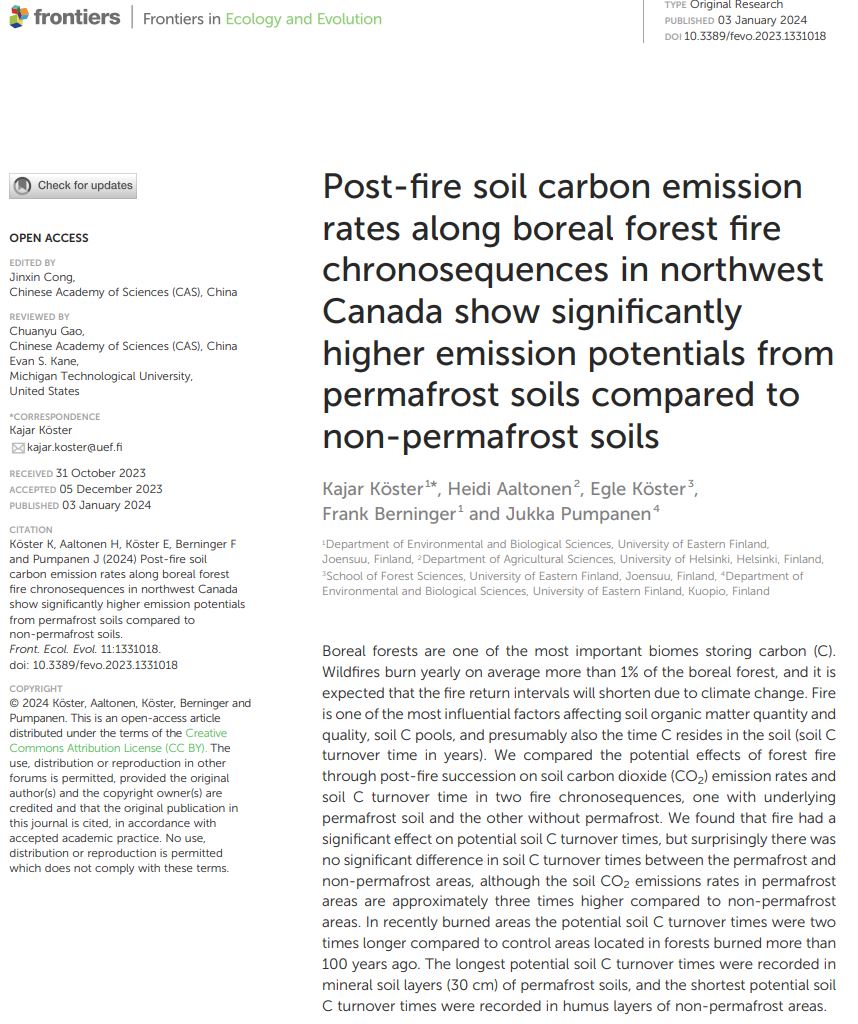Post-fire soil carbon emission rates along boreal forest fire chronosequences in northwest Canada show significantly higher emission potentials from permafrost soils compared to non-permafrost soils.
A new paper by Köster et al., 2024, compared the potential effects of forest fire through post-fire succession on soil carbon dioxide (CO2) emission rates and soil C turnover time in two fire chronosequences, one with underlying permafrost soil and the other without permafrost.
The study demonstrates that forest fires have a profound influence on soil C recovery and soil C turnover both on permafrost and non-permafrost soils. In recently burnt areas the potential soil C turnover times were two times longer than in control areas (fire >100 years ago). The effect of fires on soil C turnover times lasted up to 25 years after the fire (in permafrost areas). Although average soil C turnover times were similar in post-fire permafrost and non-permafrost soils, the soil C emissions rates in permafrost areas are approximately three times higher compared to non-permafrost areas.
